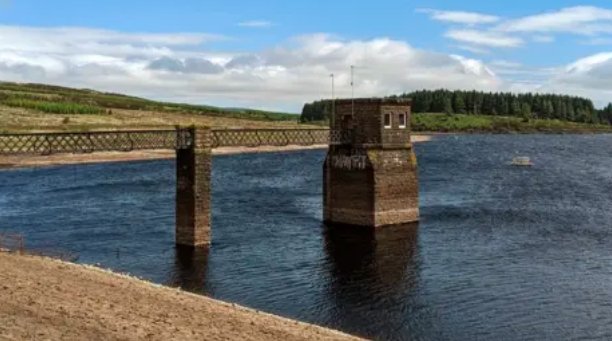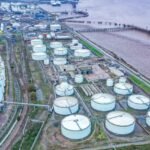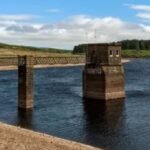Scotland may be known for its rain, but experts are urging caution. Despite a few damp weeks, the Scottish Environment Protection Agency (SEPA) says parts of the country — particularly the east — are still struggling with low water levels.
It’s not time to relax yet. The east coast remains “at risk,” and drought pressures haven’t fully lifted.
Rainfall Isn’t Fixing Everything
It’s been a wet June, no doubt. But SEPA’s latest bulletin says the recent rainfall hasn’t been enough to reverse long-standing dry conditions across eastern Scotland.
That means rivers, groundwater levels, and reservoirs in some areas are still under strain. According to SEPA, multiple catchments remain under “Alert” or “Moderate Scarcity” status.
One-line warning from SEPA: “Short-term rain doesn’t solve long-term shortages.”
In simple terms? A few showers here and there aren’t enough to rebuild months of lost water — especially when evaporation and higher usage continue.

Which Areas Are Worst Affected?
SEPA’s weekly water scarcity report, updated Thursday, puts the spotlight squarely on the east coast — an area that’s been feeling the squeeze since spring.
Key trouble zones include:
-
Parts of Angus and Fife
-
Catchments in the Moray and Aberdeenshire region
-
Some river systems around East Lothian and the Borders
Farmers in those regions have already faced irrigation restrictions this year. SEPA says those may return if current levels persist or worsen over summer.
A SEPA hydrologist commented, “Some river flows are sitting below the 25th percentile for this time of year — meaning they’re among the driest we’ve seen in recent decades.”
What’s Causing It?
The broader issue isn’t just this month’s weather — it’s the accumulation of dry spells dating back to late 2023.
Winter rainfall was patchy. Spring brought unusually low river flows. And by early June, some regions were already on “Early Warning” or “Alert” status.
Now, even though it’s rained in bursts, it hasn’t been the kind of steady, soaking rain that helps rebuild groundwater. Instead, short intense showers tend to run off quickly without being absorbed.
Here’s what SEPA says are the top three contributing factors:
-
Lower-than-average rainfall from January to May
-
Warmer temperatures, increasing evaporation
-
Higher demand for agricultural irrigation and garden watering
And yes, climate change is playing its part too.
Scotland’s Climate Paradox
It might sound odd — Scotland, famous for its wet weather, facing drought?
But that’s becoming more common. Experts are calling it a “climate paradox”: more intense rainfall events, yet overall drier soil and lower long-term water availability.
This trend has been visible for a while. According to the Met Office, eastern Scotland has seen a 20% decrease in summer rainfall over the past 50 years — while sudden storm events have actually increased.
That means:
-
Less regular water to recharge aquifers and rivers
-
More surface runoff, leading to flash flooding but not sustainable supply
-
Growing mismatch between rainfall patterns and water storage
It’s a weird twist — wet when we don’t need it, dry when we do.
Industry and Agriculture Feeling the Heat
Water scarcity isn’t just a rural issue. It’s already impacting various sectors, especially agriculture and whisky production — both major players in the Scottish economy.
Farmers are being warned about potential restrictions if river levels drop further. Some regions could see limits on abstraction licenses — essentially limiting how much water farms can draw from rivers or boreholes.
One farming spokesperson said: “We’re not panicking yet, but if July turns dry, we’ll be in trouble. Crops like potatoes and carrots need consistent water.”
Meanwhile, the whisky industry — heavily dependent on clean water — is quietly watching river levels too. Distilleries often rely on small burns and streams, some of which are flowing at critical lows.
Where Do We Go From Here?
SEPA says it’s monitoring things closely, with weekly updates and local data gathering. They’ve issued the following reminders to businesses and households in risk areas:
-
Avoid unnecessary water use (power washing, over-watering lawns)
-
Check abstraction limits if licensed
-
Report any unusual river or burn activity
They’ve also deployed monitoring teams across known hot spots — mostly along the River South Esk, River Deveron, and other sensitive catchments.
Here’s a quick look at SEPA’s current status for June 27:
| Region | Water Scarcity Level |
|---|---|
| Angus | Moderate Scarcity |
| Moray | Alert |
| Fife | Alert |
| Aberdeenshire | Moderate Scarcity |
| East Lothian | Early Warning |
| Western Scotland | Normal Conditions |
Officials stress that these levels can change rapidly — depending on both weather and demand.
















